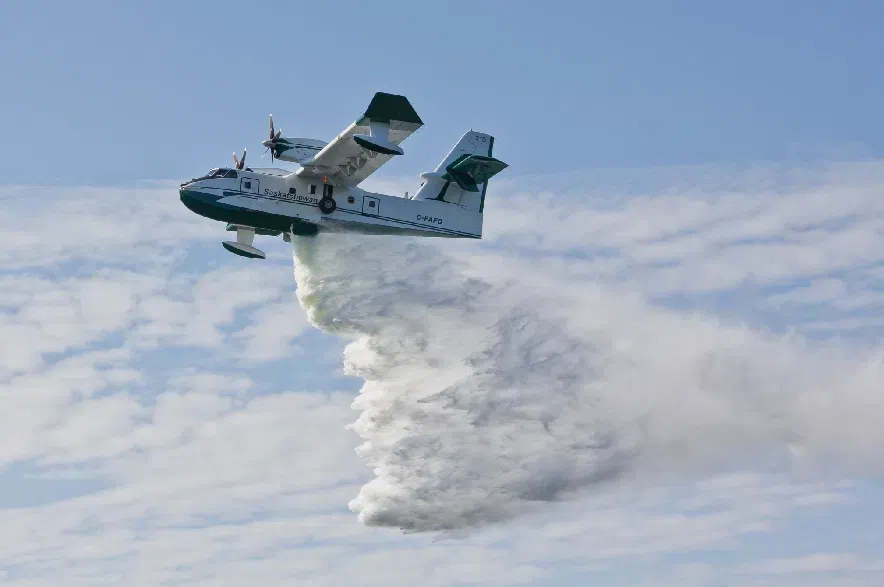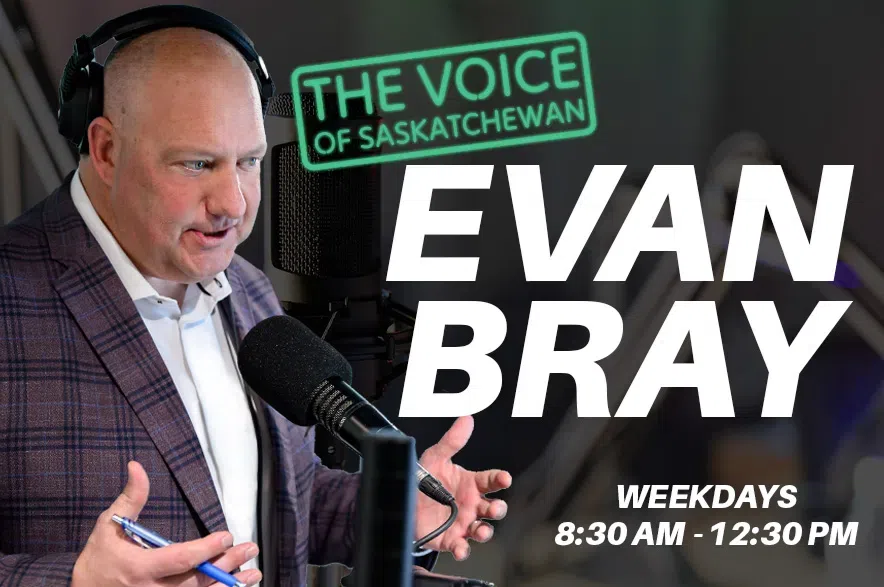The emergency management co-ordinator for the English River First Nation says more should have been done to prevent wildfires before they became an imminent threat.
After an early and active start to the wildfire season, fires are still threatening multiple communities in northern Saskatchewan. Beauval has been under an evacuation since Canada Day, while those living in Patuanak have been isolated from the main highway since June 30.
Read more:
- One way in and one way out: Patuanak access cut off by Saskatchewan wildfires
- Heat wave pushes southwest farms closer to collapse after nearly a decade of drought
- ‘No evidence’ of fires forcing wildlife closer to cities: Sask. Wildlife Federation
Highway 918, which stretches from Beauval north to Patuanak, is currently blocked because of the Arm, Smith, Docker and Harry fires.
“They are not in a desperate state, but it is an anxious state because there’s no way to determine when we’ll be able to allow people to move,” explained Candyce Paul, the English River First Nation’s emergency management co-ordinator.
The people who have remained in Beauval are essential workers who looking after the community’s essential infrastructure, she noted.
Paul said she’s grateful to all of the firefighters workers and volunteers who have been up north battling the fires. She said more firefighters from Quebec arrived this week, and they’re already starting to make progress on getting the fires under control.
But, Paul said, she’s also frustrated. She said the area has had issues with severe drought, and people have had to leave their homes due to the threat of wildfires every summer for the last three years.
“There’s definitely some fire and smoke PTSD, anxiety. They know the drill, pretty much, at this point,” Paul explained.
Paul said she believes some of the fires could have been prevented if more attention was paid to mitigation ahead of the wildfire season.
“There’s a shortage of resources, a shortage of manpower. I think at some point there has to be a lot more effort and funding put into mitigation so that we can not have to be displaced just because we live in the north,” Paul explained.
“These fires are very different than past fires. They are burning through old burns. They’re burning through muskegs. They are very brutal,” she added. “There’s a ranking for the drought, and it’s pretty high right now. We’re not expecting this to be going away in future years.”
Paul said she’d like to see the provincial government doing more to plan ahead, as opposed to reacting to wildfires as they happen.
“We need support so we can prepare ahead, not just support to react during an emergency,” she said.
“We need to be prepared. We need to have the equipment. We need to have the training and the manpower. Those are the things we need to do prior to an event happening, and then we wouldn’t be in such extreme risk as we are in these in these last few years.”
She said the First Nation has procured air purifiers for people with chronic health issues, along with air scrubbers so fresh-air shelters could be set up for people in each of the communities.
“The only time we have to move anyone out for smoke is on nurses’ or professional medical people’s recommendation,” Paul said. “The only time we do evacuate pretty much is when the fire is on the doorstep.”
In a statement, the Saskatchewan Public Safety Agency said that it did complete mitigation work in the area in both 2023 and 2024.
“The Saskatchewan Public Safety Agency delivers both prevention and mitigation programs throughout the province, such as FireSmart and youth programs, to reduce the risk of wildfires and their impacts to communities. The SPSA also completes wildfire risk assessments and provides mitigation recommendations for individual homeowners, communities and industrial sites upon request,” the agency said.
“Mitigation projects have been completed in Patuanak, English River First Nation, most recently in 2023/24 with 10.4 hectares thinned. Also, a 4.1 kilometres fire guard remains open after the 2023 SHAW Fire as requested by English River First Nation for future wildfire preparedness.”
The agency also said it plans ahead every year to address any potential resource shortages.
“The agency conducts an after-action review at the end of each season, meets with local communities and leadership to support prevention and mitigation efforts, invest in resources and new technology, such as aircraft, and expand mutual aid agreements with international partners,” the statement read.
Dozens of fires still burning around the province
According to the public safety agency, there were 68 wildfires burning around the province as of 3 p.m. on Tuesday.
Of those fires, 15 are not contained.
“This year, Saskatchewan has had 357 wildfires, which is well above the five-year average of 208 to date,” the agency said in a statement issued on Tuesday.
“Four communities remain under an evacuation order: Resort Subdivision of Lac La Plonge, La Plonge Reserve, Northern Village of Beauval and Kinoosao.”
The agency said its Recovery Task Team is meeting with community leaders to discuss recovery efforts, focusing on work involving debris removal, site clean up and helping communities begin the recovery process.











